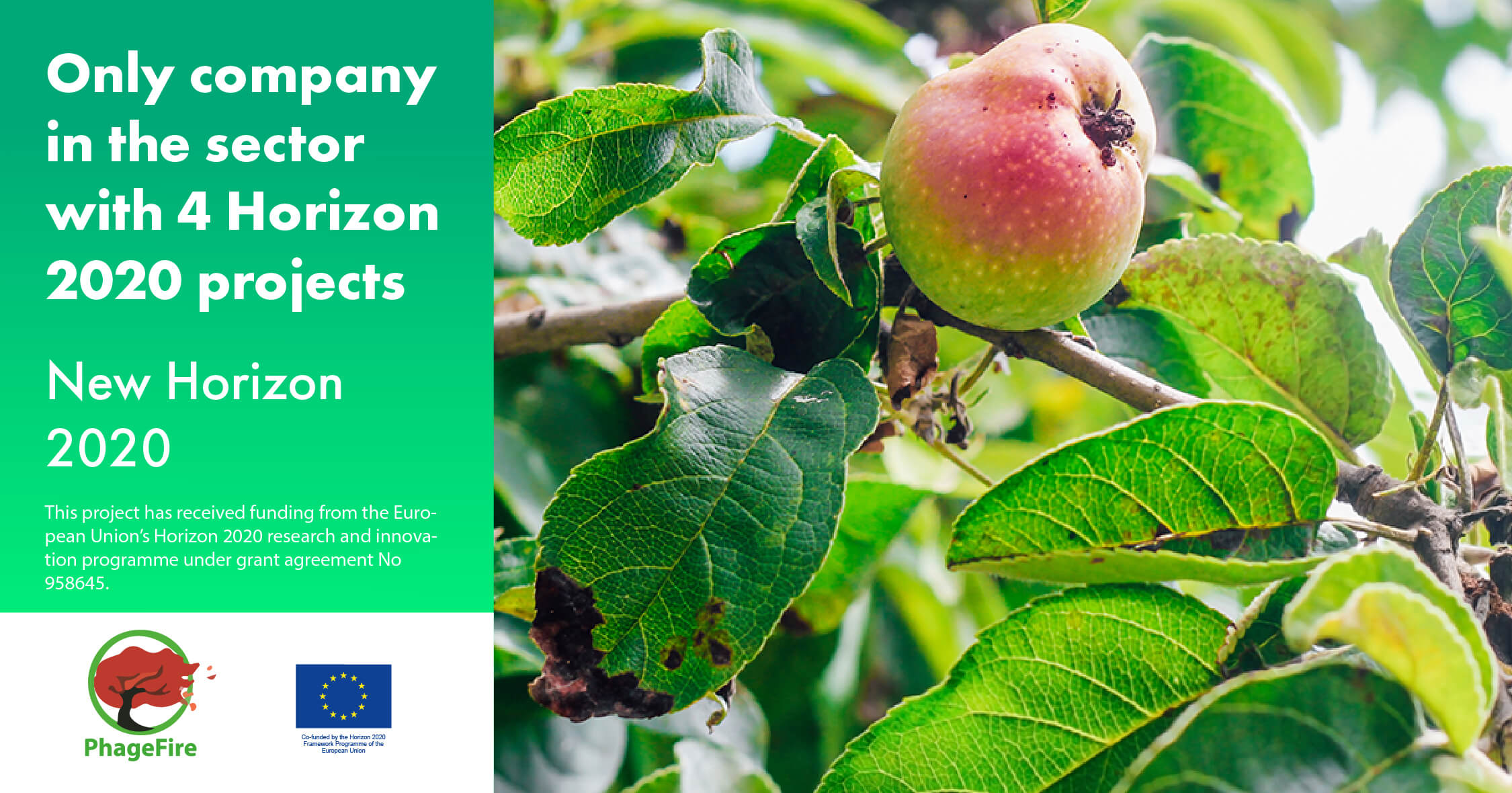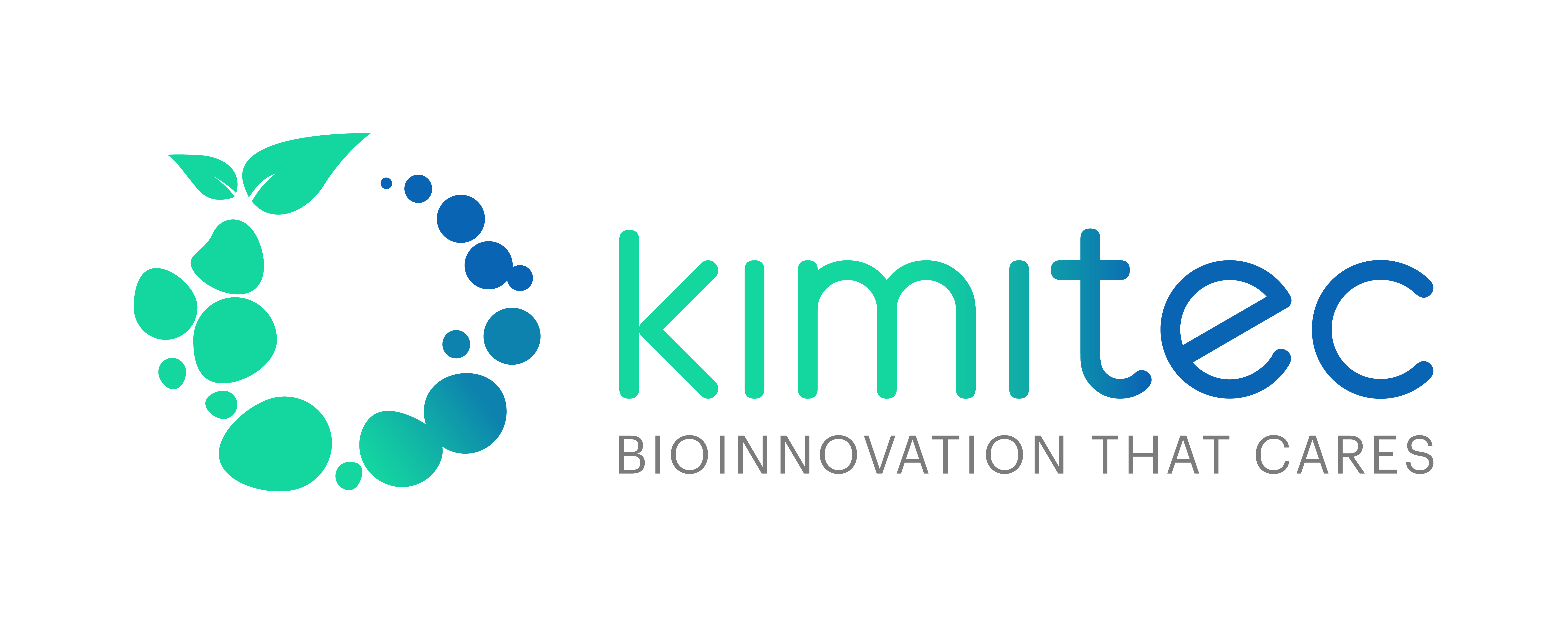PhageFire, fourth Horizon 2020. A natural solution for Fire Blight

We are pleased to announce that the European Commission has once again chosen us to lead a new Horizon 2020 project. Our fourth in five years! Acknowledging our capacity to research and develop a breakthrough natural solution for a healthier agriculture.
The project is awarded in the Fast Track to Innovation (FTI) call, one of the most demanding within the H2020 program.
We have been selected to develop PhageFire, a natural biopesticide to control fire blight disease caused by the highly destructive bacterium Erwinia amylovora (Ea) on various susceptible plant species within the Rosaceae family with great commercial interest, especially for those belonging to the pome fruit group, such as apples, pears, quinces and loquats.
Erwinia amylovora knows no borders
Native to North America, Erwinia amylovora is capable of eradicating entire pome fruit tree orchards in record time, causing huge financial losses worldwide.
These bacteria, whose distribution has been reported in North America, Europe, the Middle East, North Africa and New Zealand, follows the plant’s vegetative cycle, generally spreading to nearby plants through contaminated insects, birds, wind, rain, or tilling.
In the spring, the bacteria initiates infection of flower blossoms and developing buds. It then begins to migrate toward the base of the stem, causing the death of cells in its path, resulting in widespread infection of other plant tissues.
All infected organs contain bacteria-filled exudates that serve as a focal point for new infections. In the fall, bacteria settle in woody stem tissues, forming large longitudinal lesions, known as cankers, where contagious exudates will appear the following spring.
In summary, the signs of fire blight-afflicted plants include a generalized necrosis of flowers, fruits, leaves and roots, producing the distinctive burnt-like lesions, after which the disease is named.
How is this disease currently controlled?
Fire Blight, caused by Erwinia amylovora, is considered a very serious disease affecting pome fruit trees in Europe for which there is no heal, or any fully effective products (neither chemical nor natural) for its control, thus creating an urgent need to develop an effective solution.
According to Mr. Phil Irwin (Ph.D Agronomist), a regenerative farmer in North America and advisor to 30,000 acres of pear and apple across the states in the north-west, “the main problem with this disease is that it usually forces the growers to prune, in some cases up to 30% of the tree, in order to save it. It will take several years for that tree to regain the level of productivity it had.”
The highest concentration of acres dedicated to pome fruit production can be found in the states of Washington and Oregon, where the disease often causes very serious problems and reduces productivity by 100% in pear orchards and by 17% in apple orchards.
A single outbreak of Erwinia amylovora can easily turn critical since it can interrupt production in the area for several years.
In northern Italy, Gianfranco Pradolesi, technical advisor to 3,000 hectares of pear and apple trees in the Emilia Romagna region, warns that the problem is increasingly present in young pear plantations, for which Erwinia amylovora has a special preference: “when fire blight is detected in a young plantation, the problem will be repeated every year, with up to 10% of production being lost with each harvest”.
Just in Europe, the pome fruit sector was, in 2018, the second most important horticultural industry and represented more than 17% of the world production of these fruit trees.
In Poland, a country which is a major producer of pome fruits, Robert Sas, a researcher at the Institute of Applied Pomology (IPSAD) explains, “despite the fact that it has been four or five years without any incidence of fire blight, when the ideal conditions for its development exist, it is still a very dangerous disease for which we must be constantly alert”.
During fire blight epidemics, the costs of eradication, inspection, fruit losses and chemical treatment incurred by farmers reach over $110 million annually in the United States. However, the biggest problem of this disease, the loss of productivity is not quantified. This is a problem with a high global impact and its solution will be strategic for the EU where pome fruit production is worth some 22.8 billion euros a year.
What technology will our natural solution for fire blight use?
With the H2020 PhageFire project, we want to develop the first phage-based biopesticide to treat fire blight.
Phages are the most abundant life form in nature and are natural enemies of bacteria. Although they are a hundred times smaller, they are responsible for controlling harmful microorganisms naturally: every 48 hours they replace 50% of the global bacterial population and the human intestine alone contains billions of phages, which can also be found on the skin, in food, and in crops.
Today, we know that the phages targeting Erwinia amylovora are very specific. In the words of Félix García, the company’s CEO: “in order to continue providing tools free of chemical synthesis, we have based ourselves on the current advanced development of phage cocktails and their successful results, with the aim of developing and marketing PhageFire, the first phage-based biopesticide that will provide effective prevention and treatment against Erwinia amylovora infections in crops of the rosaceae family”.
In summary, the PhageFire project is designed to develop a safe and reliable solution to control fire blight, through the identification and selection of the most effective natural phages against Erwinia amylovora, and its subsequent stabilization and industrial scaling.
The process will challenge our scientific team at the MAAVi Innovation Center, to apply innovative technology toward the development of a product based on these bacterial control agents, which are invisible under conventional microscopes and very difficult to detect, isolate and manage, yet very effective against their natural targets, such as Erwinia amylovora.
When will our solution be ready?
In August 2020, we begin our PhageFire project, an exciting three-year long journey alongside our partners, Peras de Rincón de Soto, one of the main Associations of pear growers in La Rioja, Spain; Enviroinvest, a Hungarian research and consultancy company, expert in production, legislative authorization and commercialization of pesticides, including phage-based products; and ZHAW, the leading research institution with large experience in phage therapy against center in phage therapy at the University of Applied Sciences in Zurich, Switzerland.
Together we have set out to develop an integrated, phage-based solution that will allow pome fruit farmers to effectively control infections caused by Erwinia amylovora, reducing production losses and supporting agricultural activity as a way to preserve their social and economic conditions.
With a budget of 3.9 million euros, this research and collaboration project will benefit from the implementation of our own research method, known as the Lean Research Process, and our unique adaptation of the pharmaceutical method, as well as our extensive experience in industrial scaling of natural solutions.
Our phage-based solution, with scaling potential, will allow us, in the future, to pursue new goals within plant protection.
This project has received funding from the European Union’s Horizon 2020 research and innovation program under call No 958645. H2020-EIC-FTI-2018-2020
